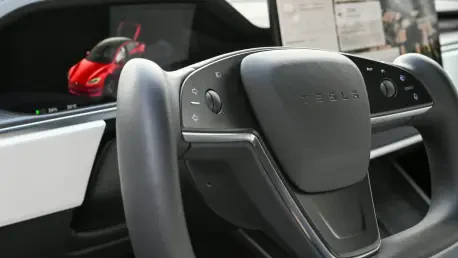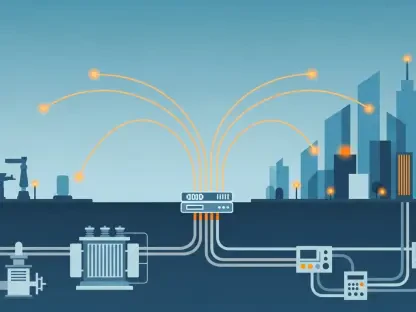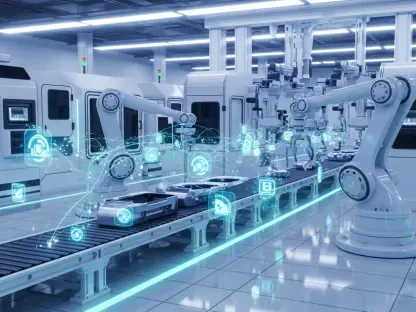I’m thrilled to sit down with Kwame Zaire, a renowned manufacturing expert with a deep focus on electronics, equipment, and production management. With his thought leadership in predictive maintenance, quality, and safety, Kwame brings a unique perspective to the evolving automotive industry, particularly on the critical topic of automakers forming strategic alliances with electric vehicle (EV) makers to navigate stringent European Union emissions regulations. In this conversation, we’ll explore the motivations behind these partnerships, the financial stakes involved, the specifics of EU policies, and the future of EV adoption in Europe.
How are automakers benefiting from partnering with electric vehicle makers to dodge fines in the European Union?
These partnerships are a strategic move for automakers to meet the EU’s tough carbon emission targets. By teaming up with EV makers, who often have surplus credits due to their low or zero-emission vehicles, traditional automakers can offset their higher emissions. It’s essentially a credit-purchasing system that helps them avoid hefty penalties while they ramp up their own EV production, which has been slower than anticipated in Europe.
What specific EU regulations are pushing these alliances, and how do they impact the industry?
The EU has set aggressive fleet-wide carbon emission targets for automakers, aiming to drastically reduce greenhouse gas output. Under these rules, manufacturers must keep their average emissions below a certain threshold, or they face steep fines. These regulations are part of the broader push for climate goals, and they’ve forced automakers to rethink their strategies, often leading to alliances with EV companies to balance out their numbers.
Can you break down the scale of the financial penalties automakers are trying to avoid through these partnerships?
The potential fines are staggering—industry estimates suggest they could total up to 15 billion euros, or roughly 17.5 billion dollars. That’s a massive hit for any company, especially for traditional automakers already investing heavily in transitioning to electric models. These penalties are a major concern because they could wipe out profits and hinder further R&D into sustainable technologies.
How has the timeline for these EU emission regulations evolved, and what does it mean for automakers?
Originally, the EU planned to enforce strict carbon emission targets based on 2025 levels alone. However, after pressure from the industry, the European Commission adjusted the rules in March to allow compliance based on average emissions over 2025 to 2027. This gives automakers a bit more breathing room to adapt, but it still keeps the pressure on to lower emissions quickly through partnerships or innovation.
What exactly are these alliance agreements, or ‘pools,’ and how do they function in practice?
These pools are formal agreements where automakers and EV makers combine their emission figures to meet EU targets collectively. They’re managed by designated ‘pool managers’ who oversee the arrangement and ensure compliance. It’s a collaborative loophole—by pooling resources, companies can share credits and avoid individual fines. The current agreements are set to expire at the end of this year, but most expect them to be renewed as the need for such collaborations isn’t going away anytime soon.
Could you share some insights into specific examples of these alliances and how they’ve come together?
Absolutely. One prominent pool is led by Tesla and includes major players like Stellantis, Toyota, Ford, and even Mazda and Subaru, with Honda and Suzuki joining earlier this year. Another interesting case is Mazda, which also partnered with Changan Mazda, its joint venture in China, alongside its Tesla alliance. Then you’ve got Nissan teaming up with BYD, South Korea’s KG Mobility pairing with Xpeng, and a pool involving Mercedes, Volvo Car, Polestar, and Smart Automobile. These alliances show a mix of global and regional strategies to tackle the same problem.
How do ownership ties influence some of these partnerships, and why do they matter?
Ownership ties play a big role in building trust and synergy within these pools. For instance, in the pool with Mercedes, Volvo Car, and Polestar, there’s a connection through Geely, a Chinese company that backs Volvo Car and Polestar and holds a significant stake in Mercedes. Similarly, Smart Automobile is a joint venture between Mercedes and Geely. These relationships make collaboration smoother, as there’s already a shared interest and strategic alignment in pushing for EV advancements.
What’s the current landscape of EV adoption in Europe, and how do you see it evolving?
EV adoption in Europe is growing, though not as fast as some had hoped. Last year, EVs accounted for about 12% of light vehicle sales, and that’s expected to climb to 15% this year. Forecasts suggest a jump to 24% by 2027 and up to 40% by the end of the decade. It’s a promising trajectory, but challenges like infrastructure, cost, and consumer hesitancy remain. Still, with regulatory pressure and these alliances, the push toward electrification is undeniable.
What’s your forecast for the future of these automaker-EV maker alliances in the context of EU regulations?
I think these alliances will remain a critical tool for the foreseeable future, especially as EU regulations tighten further. While automakers are investing heavily in their own EV lines, the transition won’t happen overnight. Pools provide a necessary bridge, and I expect we’ll see even more creative partnerships as new players enter the market and competition heats up. The key will be balancing short-term compliance with long-term innovation to eventually stand on their own without relying on credits.









